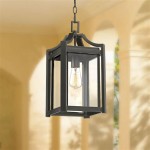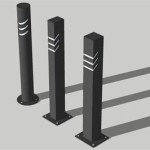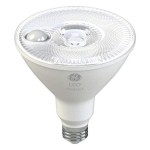Outdoor LED Lights Reviews: Essential Aspects to Consider
Outdoor LED lights have revolutionized outdoor illumination, offering numerous advantages over traditional lighting solutions. With their energy efficiency, long lifespan, and durability, they've become an essential component of exterior lighting. However, choosing the right LED lights can be overwhelming, given the vast array of options available. This comprehensive guide explores the key aspects to consider when reviewing outdoor LED lights, empowering you to make informed decisions.
Brightness and Lumens
Brightness, measured in lumens, is a crucial factor for outdoor lighting. Consider the intended use and the area you need to illuminate. For brighter lighting, opt for higher lumen output. For ambient lighting, lower lumen output may suffice.
Color Temperature
Color temperature refers to the light's warmth or coolness. Warm light (2,700K-3,000K) creates a cozy ambiance, while cool light (4,000K-5,000K) provides a brighter, more stimulating environment. Choose a color temperature that aligns with the desired atmosphere.
Beam Angle
Beam angle determines the spread of light distribution. A narrow beam angle focuses light in a specific direction, while a wide beam angle provides broader illumination. Consider the area you need to cover and the desired effect.
Wattage and Energy Efficiency
Wattage indicates the power consumption of the light. LED lights consume significantly less energy than traditional lighting, making them energy-efficient. Look for high-efficiency models with low wattage to minimize energy consumption.
Durability and Waterproof Rating
Outdoor lights must withstand harsh weather conditions. Ensure the light fixture has an appropriate IP rating (Ingress Protection) to indicate its resistance to dust and water. For areas prone to moisture, choose IP65 or higher rated lights.
Motion Activation
Motion-activated lights add convenience and security to outdoor areas. They switch on when motion is detected, providing illumination only when necessary. Motion activation can save energy and deter potential intruders.
Dimmability
Dimmable lights allow you to adjust the brightness to your preference. They offer flexibility to create the desired ambiance or adapt to changing lighting conditions. Look for lights with dimming capabilities if you wish to have precise control.
Additional Features
Some outdoor LED lights offer additional features such as: UV resistance to prevent fading, dusk-to-dawn sensors for automatic operation, and remote control for convenient dimming or scheduling.
Read Reviews and Compare
Before making a purchase, read reviews from other users to gain insights into the performance, durability, and user experience. Compare different models within your budget and consider the factors discussed above to determine the best LED lights for your outdoor needs.
Conclusion
Choosing the right outdoor LED lights requires careful consideration of various aspects. By understanding brightness, color temperature, beam angle, wattage, durability, motion activation, dimmability, and additional features, you can select lights that meet your specific requirements and create an illuminated, functional, and aesthetically pleasing outdoor space.

Govee Rgbic Wi Fi Bluetooth Outdoor Led Lights Review The Gadgeteer

Xmcosy Outdoor Smart Led Dimmable String Lights Review Wifi Controlled Lighting The Gadgeteer

Tcp Led Outdoor Festoon Light Review Colour Changing String Lights

Quntis Led Outdoor String Lights Review Canadian Budget Binder

Govee Rgbicww Led Smart Outdoor Flood Lights Review The Gadgeteer

Innr Outdoor Smart Globe Lights Review Excellent Lighting

Venusop Outdoor Led Solar String Lights Review The Gadgeteer

The Best Led Light Strips In 2024 Cnn Underscored

Best Led Pathway Lights Review The Jerum Post

Govee Rgbic Wi Fi Bluetooth Outdoor Led Lights Review The Gadgeteer
Related Posts







